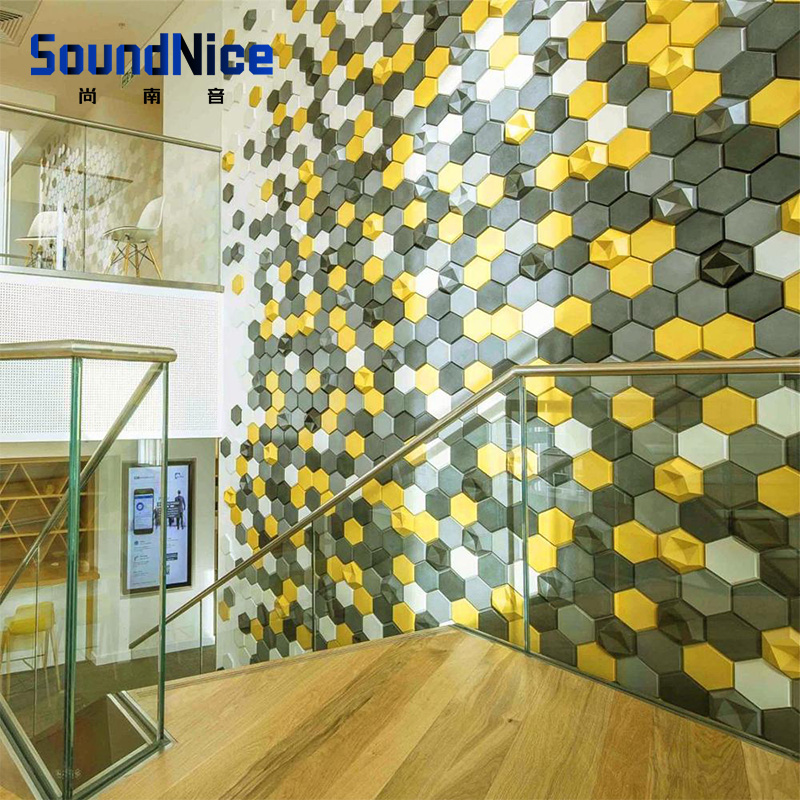
5 Effective Strategies for Noise Reduction Panels
In today's bustling world, noise pollution has become a significant concern, affecting both residential and commercial spaces. As individuals seek tranquility and focus, the demand for noise reduction solutions has surged.
Among these solutions, noise reduction panels stand out as effective tools for minimizing unwanted sounds and creating more peaceful environments. This article explores the versatility and benefits of noise reduction panels, offering insights into their functionality, installation, and effectiveness.
Understanding Noise Reduction Panels
What Are Noise Reduction Panels?
Noise reduction panels, also known as sound-absorbing panels or acoustic panels, are specialized materials designed to absorb sound waves and reduce reverberation within a space. These panels are typically composed of acoustic foam, fabric-wrapped fiberglass, or perforated metal, engineered to dampen noise and improve acoustics.
How Do Noise Reduction Panels Work?
Noise reduction panels function by capturing sound waves and converting their energy into heat through friction within the panel material. This absorption process reduces the intensity of sound reflections, minimizing echoes and reverberations in the surrounding environment. By mitigating noise levels, these panels enhance speech intelligibility, optimize audio quality, and foster better concentration.
Benefits of Noise Reduction Panels
Enhanced Privacy
In office settings or open floor plans, maintaining confidentiality during meetings or discussions is crucial. Noise reduction panels create acoustic barriers, preventing sound from traveling between spaces and safeguarding sensitive conversations. Employees can communicate more securely without the fear of being overheard, enhancing productivity and confidentiality.
Improved Concentration
In educational institutions or work environments, distractions can significantly impact performance and focus. Noise reduction panels help create quieter surroundings by minimizing external disturbances such as traffic noise or conversations from adjacent rooms. This reduction in ambient noise promotes better concentration, allowing students to learn more effectively and professionals to work with heightened focus and efficiency.
Aesthetic Enhancement
Beyond their functional benefits, noise reduction panels contribute to the aesthetic appeal of interior spaces. Available in various colors, shapes, and designs, these panels can be customized to complement existing décor or serve as artistic accents. Whether installed in offices, recording studios, or home theaters, acoustic panels blend seamlessly with the surrounding environment, enhancing visual appeal while improving acoustics.
Versatile Application
One of the key advantages of noise reduction panels is their versatility in application. From commercial buildings and hospitality venues to residential homes and educational facilities, these panels can be installed in diverse settings to address specific acoustic challenges. Whether seeking to create a serene atmosphere in a restaurant, reduce noise in a classroom, or optimize audio quality in a recording studio, noise reduction panels offer tailored solutions for various environments.
Installation and Maintenance
Installation Process
Installing noise reduction panels is a straightforward process that can be customized based on the specific requirements of the space. Panels can be mounted on walls, ceilings, or even suspended from the ceiling to achieve optimal acoustic performance. Depending on the type of panel and the desired aesthetic, installation methods may include adhesive mounting, mechanical fastening, or suspension systems.
Maintenance Tips
To ensure the long-term effectiveness of noise reduction panels, proper maintenance is essential. Regular cleaning with a soft brush or vacuum can help remove dust and debris, preventing buildup that may compromise acoustic performance. Additionally, inspecting panels for signs of wear or damage and promptly addressing any issues can prolong their lifespan and preserve their functionality.
Effectiveness and Considerations
Factors Influencing Effectiveness
Several factors can influence the effectiveness of noise reduction panels, including panel material, thickness, density, and placement within the space. Understanding these variables and consulting with acoustic experts can help determine the optimal configuration for achieving desired noise reduction goals.
Considerations for Optimal Performance
When selecting and installing noise reduction panels, several considerations should be taken into account to maximize their performance. These include identifying the primary sources of noise, assessing the acoustics of the space, and selecting panels with appropriate acoustic properties to address specific frequency ranges. Additionally, factors such as room dimensions, surface finishes, and furniture placement can impact the overall effectiveness of noise reduction efforts.
Conclusion
Noise reduction panels offer an effective solution for minimizing unwanted sounds and creating more conducive environments for work, study, and relaxation. With their ability to absorb sound waves, reduce reverberation, and enhance acoustics, these panels provide tangible benefits in various settings. By understanding their functionality, benefits, and installation considerations, individuals and organizations can harness the power of noise reduction panels to optimize their auditory experiences and improve overall well-being.
FAQs
How do noise reduction panels differ from soundproofing materials?
Noise reduction panels primarily focus on absorbing sound within a space to reduce echoes and reverberations, whereas soundproofing materials aim to block the transmission of sound between spaces entirely.
Are noise reduction panels suitable for outdoor use?
While noise reduction panels are designed for indoor applications, there are specialized outdoor acoustic solutions available, such as sound barriers and acoustic fencing, designed to mitigate external noise pollution.
Can noise reduction panels eliminate all noise in a room?
While noise reduction panels can significantly reduce ambient noise and reverberation, the complete elimination of all sound in a room is not feasible. However, they can create much quieter environments conducive to concentration and relaxation.
Do noise reduction panels require professional installation?
While some individuals may opt for professional installation to ensure optimal results, noise reduction panels can be installed by DIY enthusiasts using basic tools and hardware following manufacturer guidelines.
How do I determine the number of panels needed for my space?
The number of noise reduction panels required depends on various factors, including the size of the room, the acoustic properties of the panels, and the desired level of noise reduction. Acoustic consultants or manufacturers can provide guidance based on specific requirements.
Are noise reduction panels environmentally friendly?
Many noise reduction panels are manufactured using sustainable materials and processes, making them eco-friendly options for improving acoustic environments without compromising environmental integrity.










Leave a comment